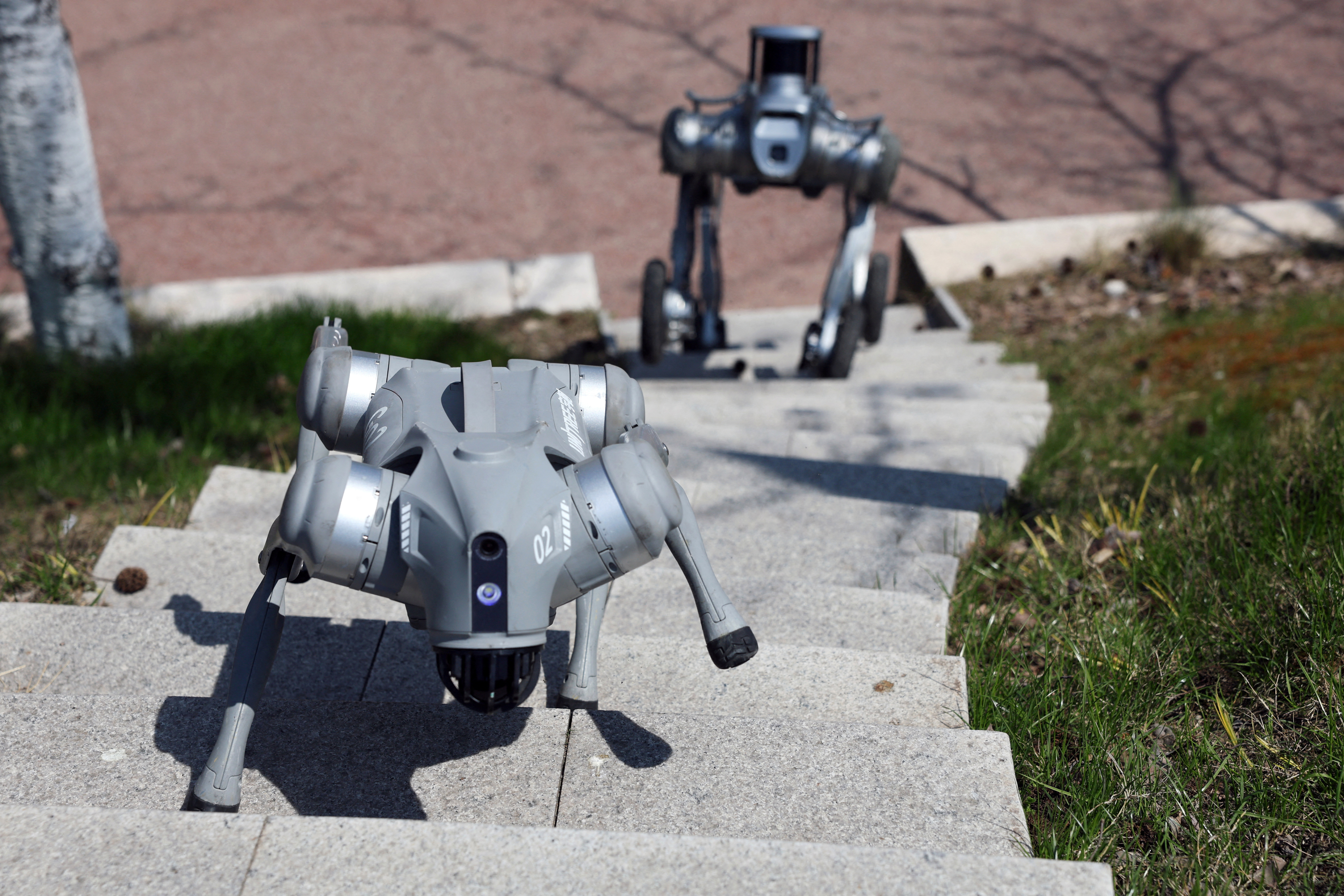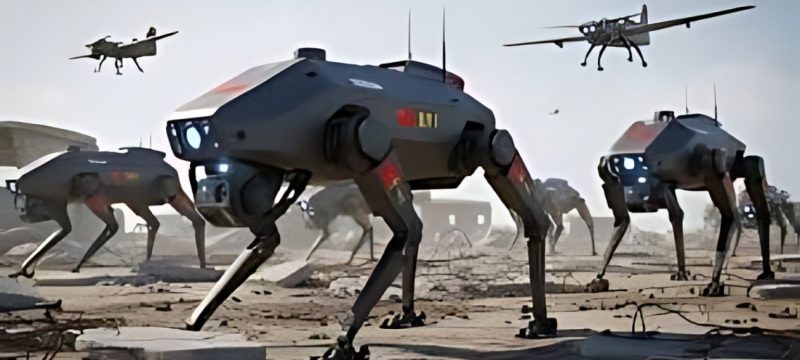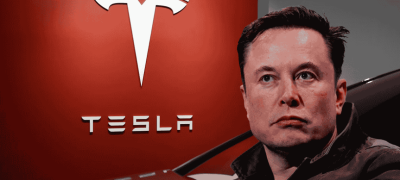China’s military is rapidly integrating artificial intelligence into its defense systems, using cutting-edge models like DeepSeek to power robot dogs, autonomous drones, and battlefield decision-making technologies — marking a new phase in the global race for AI-driven warfare.
AI at the Core of China’s Military Modernization
In February, Chinese defense giant Norinco unveiled the P60 military vehicle, capable of autonomously performing combat-support operations at speeds up to 50 kilometers per hour. What made it remarkable wasn’t just its speed or design — it was powered by DeepSeek, China’s most advanced AI model and the centerpiece of the country’s growing military AI ecosystem.
The vehicle’s debut was hailed by Communist Party officials as a milestone in China’s quest to rival U.S. military technology. It reflects Beijing’s commitment to using homegrown AI to enhance defense capabilities, even as global powers warn of the risks of autonomous weapon systems.
A Reuters review of hundreds of patents, procurement records, and research papers reveals how Beijing’s People’s Liberation Army (PLA) is systematically building AI capabilities for target recognition, autonomous decision-making, and real-time battlefield coordination — areas that mirror ongoing U.S. efforts.
From Nvidia Chips to Huawei Hardware
Despite U.S. export bans on advanced semiconductor technology, Chinese military research continues to cite Nvidia’s A100 and H100 chips, often under export control. While it remains unclear if these chips were stockpiled before sanctions, patents as recent as June 2025 show their use in PLA-linked research.
At the same time, China is aggressively transitioning toward domestically made processors, such as Huawei’s Ascend AI chips. Analysts note that PLA procurement records show a steady increase in demand for Huawei hardware, aligning with Beijing’s campaign to promote “algorithmic sovereignty” — the goal of reducing dependence on Western technology.
A Jamestown Foundation analysis shared with Reuters found that dozens of tenders issued by PLA entities in 2025 explicitly requested DeepSeek-based systems and Huawei components.
Rise of DeepSeek and Autonomous Systems
DeepSeek, developed as a flagship Chinese AI model, has quickly become the preferred system for the country’s defense research. A dozen PLA tenders reviewed by Reuters mentioned DeepSeek, while only one cited Alibaba’s Qwen model, signaling DeepSeek’s dominance.
According to internal research and patent filings, PLA scientists are using DeepSeek to train AI-powered drone swarms that can recognize, track, and coordinate attacks with minimal human input. These systems could transform battlefield dynamics, allowing rapid response and tactical synchronization in complex environments.
One 2025 patent from Beihang University, a major military research hub, describes how DeepSeek helps drone formations make collective decisions when engaging “low, slow, small” threats — shorthand for small drones or light aircraft.
Chinese researchers claim DeepSeek-powered systems can assess 10,000 battlefield scenarios in under 50 seconds, a task that would traditionally take human planners nearly two days.
Robot Dogs and Drone Swarms
China’s military ambitions go beyond software. In late 2024, the PLA issued a tender for AI-powered robot dogs capable of scouting terrain, clearing explosives, and operating in coordinated packs. While Reuters could not verify whether the tender was fulfilled, the PLA has already deployed armed robot dogs from Unitree Robotics in military exercises, according to state media images.

Simultaneously, drone swarms—capable of flying in formation, detecting targets, and engaging independently—are becoming a central focus of China’s AI strategy. These developments indicate that the PLA is pushing toward greater autonomy in weapon systems, though Beijing insists human oversight will remain in place.
The U.S.-China AI Arms Race
Both China and the United States are racing to militarize artificial intelligence. Washington’s Department of Defense has announced plans to deploy thousands of autonomous drones by the end of 2025 to offset China’s numerical advantage in unmanned systems.
Meanwhile, the U.S. State Department has accused DeepSeek of “willingly supporting China’s military and intelligence operations,” while pledging to keep American AI technologies “out of the hands of adversaries.”
Balancing Power and Ethics
While Chinese officials have publicly promised to maintain human control over AI weapons, the rapid pace of innovation — from autonomous war planning to robotic combat units — is raising ethical and strategic questions worldwide.
Experts warn that as AI-driven warfare becomes more sophisticated, the line between human and machine decision-making on the battlefield will blur, increasing the risks of unintended escalation.
As both nations accelerate toward an AI-enhanced military future, the world may be entering a new era where conflicts are not just fought with soldiers and tanks — but with algorithms, data, and intelligent machines.
In other news also read about How a Former Casting Agency Became Ukraine’s $1 Billion Drone Powerhouse









